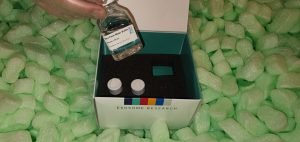Within the dermis, a dense community of ECM proteins offers structural assist to the pores and skin and regulates a large variety of signaling pathways which govern cell proliferation and different crucial processes. Both intrinsic ageing, which happens steadily over time, and extrinsic ageing (photoaging), which happens as a consequence of exterior insults such as photo voltaic radiation, trigger alterations to the dermal ECM. In this examine, we utilized each quantitative and world proteomics, alongside single harmonic era (SHG) and two-photon autofluorescence (TPAF) imaging, to assess modifications in dermal composition throughout intrinsic and extrinsic ageing.
We discover that each intrinsic and extrinsic ageing consequence in important decreases in ECM-supporting proteoglycans and structural ECM integrity, evidenced by reducing collagen abundance and rising fibril fragmentation. Intrinsic ageing additionally produces modifications distinct from these produced by photoaging, including reductions in elastic fiber and crosslinking enzyme abundance. In distinction, photoaging is primarily outlined by will increase in elastic fiber-associated protein and pro-inflammatory proteases. Network evaluation steered that AM and Bk have been accountable for PHN preliminary assault, whereas Inq, B, T and Bc-h would degrade PHN metabolites.
Changes related with photoaging are evident even in younger (mid 20s) sun-exposed forearm pores and skin, indicating that proteomic proof of photoaging is current many years prior to clinical indicators of photoaging. GO time period enrichment revealed that each intrinsic ageing and photoaging share widespread options of persistent irritation. The proteomic data has been deposited to the ProteomeXchange Consortium by way of the PRIDE associate repository with the data set identifier PXD015982.
Quantitative proteomic profiling of extracellular matrix and site-specific collagen post-translational modifications in an in vitro mannequin of lung fibrosis
Lung fibrosis is characterised by extreme deposition of extracellular matrix (ECM), in particular collagens, by fibroblasts in the interstitium. Transforming development factor-β1 (TGF-β1) alters the expression of many extracellular matrix (ECM) elements produced by fibroblasts, however such modifications in ECM composition as effectively as modulation of collagen post-translational modification (PTM) levels have not been comprehensively investigated. Here, we carried out mass spectrometry (MS)-based proteomics analyses to assess modifications in the ECM deposited by cultured lung fibroblasts from idiopathic pulmonary fibrosis (IPF) sufferers upon stimulation with remodeling development issue β1 (TGF-β1).
In addition to the ECM modifications generally related with lung fibrosis, MS-based label-free quantification revealed profound results on enzymes concerned in ECM crosslinking and turnover as effectively as a number of constructive and unfavorable suggestions mechanisms of TGF-β1 signaling. Notably, the ECM modifications noticed in this in vitro mannequin correlated considerably with ECM modifications noticed in affected person samples. Because collagens are topic to a number of PTMs with main implications in illness, we carried out a new bioinformatic platform to analyze MS data that enables for the complete mapping and site-specific quantitation of collagen PTMs in crude ECM preparations.
These analyses yielded a complete map of prolyl and lysyl hydroxylations as effectively as lysyl glycosylations for 15 collagen chains. In addition, site-specific PTM evaluation revealed novel websites of prolyl-3-hydroxylation and lysyl glycosylation in sort I collagen. Interestingly, the outcomes present, for the first time, that TGF-β1 can modulate prolyl-3-hydroxylation and glycosylation in a site-specific method. Taken collectively, this proof of idea examine not solely reveals unanticipated TGF-β1 mediated regulation of collagen PTMs and different ECM elements but additionally lays the basis for dissecting their key roles in well being and illness.

Time-resolved Analysis of the Matrix Metalloproteinase 10 Substrate Degradome
Proteolysis is an irreversible post-translational modification that impacts intra- and intercellular communication by modulating the exercise of bioactive mediators. Key to understanding protease operate is the system-wide identification of cleavage occasions and their dynamics in physiological contexts. Despite recent advances in mass spectrometry-based proteomics for high-throughput substrate screening, present approaches endure from excessive false constructive charges and solely seize single states of protease exercise. Here, we current a workflow primarily based on multiplexed terminal amine isotopic labeling of substrates for time-resolved substrate degradomics in complicated proteomes.
This method considerably enhances confidence in substrate identification and categorizes cleavage occasions by specificity and structural accessibility of the cleavage web site. We reveal concomitant quantification of cleavage web site spanning peptides and neo-N and/or neo-C termini to estimate relative ratios of noncleaved and cleaved varieties of substrate proteins. By making use of this technique to dissect the matrix metalloproteinase 10 (MMP10) substrate degradome in fibroblast secretomes, we recognized the extracellular matrix protein ADAMTS-like protein 1 (ADAMTSL1) as a direct MMP10 substrate and revealed MMP10-dependent ectodomain shedding of platelet-derived development issue receptor alpha (PDGFRα) as effectively as sequential processing of sort I collagen.
) Mouse anti Podoplanin-Biotin (human) |
|
101-MBi40 |
Angio Proteomie |
50ug |
EUR 297.6 |
) Hamster anti Podoplanin-Biotin (mouse) |
|
103-MBi40 |
Angio Proteomie |
50ug |
EUR 297.6 |
 Anti-Mouse Podoplanin Antibody |
|
103-M552 |
ReliaTech |
100 µg |
EUR 399 |
|
Description: Podoplanin, also known as glycoprotein 38 (gp38), PA2.26 antigen, T1alpha (T1A), and aggrus, is a 38 kDa type I transmembrane sialoglycoprotein and member of the podoplanin family. Podoplanin is synthesized as a 172 amino acid (aa) precursor with a 22 aa signal sequence, a 119 aa extracellular domain (ECD), a 21 aa transmembrane region, and a short, 10 aa cytoplasmic tail. The ECD contains abundant Ser/Thr residues as potential sites for Oglycosylation, and the cytoplasmic region contains putative sites for kinase C and cAMP phosphorylation. Mouse Podoplanin shares 77% and 46% aa sequence identity with rat and human Podoplanin, respectively. Podoplanin is expressed on glomerular epithelial cells (podocytes), type I lung alveolar cells, lymphatic endothelial cells, and on numerous tumors including colorectal tumors, squamous cell carcinomas, testicular seminoma, and brain tumors. One study shows high expression of Podoplanin mRNA in placenta, lung, skeletal muscle, and heart, and weaker levels in brain, kidney, and liver. Podoplanin is the ligand for Ctype lectin like receptor 2 (CLEC2). Their association is dependent on sialic acid on Oglycans of Podoplanin. Through its association with CLEC2, Podoplanin induces platelet aggregation and tumor metastasis. Podoplanin is also necessary for lymphatic vessel formation, normal lung cell proliferation and alveolus formation at birth. |
 Anti-Mouse Podoplanin Antibody |
|
103-PA40 |
ReliaTech |
200 µg |
EUR 204.75 |
|
Description: Podoplanin, also known as glycoprotein 38 (gp38), PA2.26 antigen, T1alpha (T1A), and aggrus, is a 38 kDa type I transmembrane sialoglycoprotein and member of the podoplanin family. Podoplanin is synthesized as a 172 amino acid (aa) precursor with a 22 aa signal sequence, a 119 aa extracellular domain (ECD), a 21 aa transmembrane region, and a short, 10 aa cytoplasmic tail. The ECD contains abundant Ser/Thr residues as potential sites for Oglycosylation, and the cytoplasmic region contains putative sites for kinase C and cAMP phosphorylation. Mouse Podoplanin shares 77% and 46% aa sequence identity with rat and human Podoplanin, respectively. Podoplanin is expressed on glomerular epithelial cells (podocytes), type I lung alveolar cells, lymphatic endothelial cells, and on numerous tumors including colorectal tumors, squamous cell carcinomas, testicular seminoma, and brain tumors. One study shows high expression of Podoplanin mRNA in placenta, lung, skeletal muscle, and heart, and weaker levels in brain, kidney, and liver. Podoplanin is the ligand for Ctype lectin like receptor 2 (CLEC2). Their association is dependent on sialic acid on Oglycans of Podoplanin. Podoplanin is also necessary for lymphatic vessel formation, normal lung cell proliferation and alveolus formation at birth. |
 Anti-Mouse Podoplanin Antibody |
|
103-PA40S |
ReliaTech |
100 µg |
EUR 126 |
|
Description: Podoplanin, also known as glycoprotein 38 (gp38), PA2.26 antigen, T1alpha (T1A), and aggrus, is a 38 kDa type I transmembrane sialoglycoprotein and member of the podoplanin family. Podoplanin is synthesized as a 172 amino acid (aa) precursor with a 22 aa signal sequence, a 119 aa extracellular domain (ECD), a 21 aa transmembrane region, and a short, 10 aa cytoplasmic tail. The ECD contains abundant Ser/Thr residues as potential sites for Oglycosylation, and the cytoplasmic region contains putative sites for kinase C and cAMP phosphorylation. Mouse Podoplanin shares 77% and 46% aa sequence identity with rat and human Podoplanin, respectively. Podoplanin is expressed on glomerular epithelial cells (podocytes), type I lung alveolar cells, lymphatic endothelial cells, and on numerous tumors including colorectal tumors, squamous cell carcinomas, testicular seminoma, and brain tumors. One study shows high expression of Podoplanin mRNA in placenta, lung, skeletal muscle, and heart, and weaker levels in brain, kidney, and liver. Podoplanin is the ligand for Ctype lectin like receptor 2 (CLEC2). Their association is dependent on sialic acid on Oglycans of Podoplanin. Podoplanin is also necessary for lymphatic vessel formation, normal lung cell proliferation and alveolus formation at birth. |
 Mouse Podoplanin ELISA kit |
|
E01A24381 |
BlueGene |
96T |
EUR 700 |
|
Description: ELISA |
 Mouse Podoplanin ELISA kit |
|
E03P0082-192T |
BlueGene |
192 tests |
EUR 1524 |
|
|
|
Description: A sandwich ELISA for quantitative measurement of Mouse Podoplanin in samples from blood, plasma, serum, cell culture supernatant and other biological fluids. This is a high quality ELISA kit developped for optimal performance with samples from the particular species. |
 Mouse Podoplanin ELISA kit |
|
E03P0082-48 |
BlueGene |
1 plate of 48 wells |
EUR 624 |
|
|
|
Description: A sandwich ELISA for quantitative measurement of Mouse Podoplanin in samples from blood, plasma, serum, cell culture supernatant and other biological fluids. This is a high quality ELISA kit developped for optimal performance with samples from the particular species. |
 Mouse Podoplanin ELISA kit |
|
E03P0082-96 |
BlueGene |
1 plate of 96 wells |
EUR 822 |
|
|
|
Description: A sandwich ELISA for quantitative measurement of Mouse Podoplanin in samples from blood, plasma, serum, cell culture supernatant and other biological fluids. This is a high quality ELISA kit developped for optimal performance with samples from the particular species. |
 Mouse Podoplanin ELISA Kit |
|
IMSPDPNKT |
Innovative research |
each |
EUR 752 |
|
|
|
Description: Mouse Podoplanin ELISA Kit |
 anti- Podoplanin antibody |
|
FNab06598 |
FN Test |
100µg |
EUR 702 |
|
|
|
Description: Antibody raised against Podoplanin |
 anti- Podoplanin antibody |
|
FNab06599 |
FN Test |
100µg |
EUR 702 |
|
|
|
Description: Antibody raised against Podoplanin |
 Mouse Monoclonal anti-Rat Podoplanin Antibody |
|
xAP-0897 |
Angio Proteomie |
100ug |
EUR 280 |
 Protein) Mouse Podoplanin (PDPN) Protein |
|
20-abx650139 |
Abbexa |
-
Ask for price
-
Ask for price
-
Ask for price
-
Ask for price
-
Ask for price
|
- 100 ug
- 10 ug
- 1 mg
- 200 ug
- 50 ug
|
|
|
 Protein) Mouse Podoplanin (PDPN) Protein |
|
abx694266-10nmol |
Abbexa |
10 nmol |
EUR 700 |
 Protein) Mouse Podoplanin (PDPN) Protein |
|
abx694266-5nmol |
Abbexa |
5 nmol |
EUR 462.5 |
 Protein) Mouse Podoplanin (PDPN) Protein |
|
abx650139-100g |
Abbexa |
100 µg |
EUR 537.5 |
 Protein) Mouse Podoplanin (PDPN) Protein |
|
abx650139-10g |
Abbexa |
10 µg |
EUR 212.5 |
 Protein) Mouse Podoplanin (PDPN) Protein |
|
abx650139-50g |
Abbexa |
50 µg |
EUR 375 |
 CLIA Kit) Mouse Podoplanin (PDPN) CLIA Kit |
|
20-abx493858 |
Abbexa |
-
Ask for price
-
Ask for price
-
Ask for price
|
- 10 × 96 tests
- 5 × 96 tests
- 96 tests
|
|
|
 ELISA Kit) Mouse Podoplanin (PDPN) ELISA Kit |
|
DLR-PDPN-Mu |
DL Develop |
96T |
EUR 475 |
|
|
|
Description: tissue homogenates, cell lysates or other biological fluids. |
 ELISA Kit) Mouse Podoplanin (PDPN) ELISA Kit |
|
DLR-PDPN-Mu-48T |
DL Develop |
48T |
EUR 632.4 |
|
|
|
Description: A sandwich quantitative ELISA assay kit for detection of Mouse Podoplanin (PDPN) in samples from tissue homogenates, cell lysates or other biological fluids. |
 ELISA Kit) Mouse Podoplanin (PDPN) ELISA Kit |
|
DLR-PDPN-Mu-96T |
DL Develop |
96T |
EUR 825.6 |
|
|
|
Description: A sandwich quantitative ELISA assay kit for detection of Mouse Podoplanin (PDPN) in samples from tissue homogenates, cell lysates or other biological fluids. |
 ELISA Kit) Mouse Podoplanin (PDPN) ELISA Kit |
|
EK8596 |
SAB |
96Т |
EUR 799 |
|
|
 ELISA Kit) Mouse Podoplanin (PDPN) ELISA Kit |
|
DL-PDPN-Mu |
DL Develop |
96T |
EUR 453 |
|
|
|
Description: tissue homogenates, cell lysates or other biological fluids. |
 ELISA Kit) Mouse Podoplanin (PDPN) ELISA Kit |
|
abx571749-96tests |
Abbexa |
96 tests |
EUR 943.2 |
|
|
 ELISA Kit) Mouse Podoplanin (PDPN) ELISA Kit |
|
AE28131MO-48Tests |
Abebio |
48 Tests |
EUR 325 |
|
|
|
Description: Mouse (Mus musculus) |
 ELISA Kit) Mouse Podoplanin (PDPN) ELISA Kit |
|
AE28131MO-96Tests |
Abebio |
96 Tests |
EUR 610 |
|
|
|
Description: Mouse (Mus musculus) |
 ELISA Kit) Mouse Podoplanin (PDPN) ELISA Kit |
|
20-abx154564 |
Abbexa |
-
Ask for price
-
Ask for price
-
Ask for price
|
- 10 × 96 tests
- 5 × 96 tests
- 96 tests
|
|
|
 ELISA Kit) Mouse Podoplanin (PDPN) ELISA Kit |
|
RD-PDPN-Mu-48T |
Reddot Biotech |
48T |
EUR 464.3 |
|
|
|
Description: tissue homogenates, cell lysates and other biological fluids. |
 ELISA Kit) Mouse Podoplanin (PDPN) ELISA Kit |
|
RD-PDPN-Mu-48Tests |
Reddot Biotech |
48 Tests |
EUR 639.6 |
 ELISA Kit) Mouse Podoplanin (PDPN) ELISA Kit |
|
RD-PDPN-Mu-96T |
Reddot Biotech |
96T |
EUR 663.3 |
|
|
|
Description: tissue homogenates, cell lysates and other biological fluids. |
 ELISA Kit) Mouse Podoplanin (PDPN) ELISA Kit |
|
RD-PDPN-Mu-96Tests |
Reddot Biotech |
96 Tests |
EUR 888 |
 ELISA Kit) Mouse Podoplanin (PDPN) ELISA Kit |
|
RK13459 |
Abclonal |
96T |
EUR 280 |
 ELISA Kit) Mouse Podoplanin (PDPN) ELISA Kit |
|
SEC719Mu-10x96wellstestplate |
Cloud-Clone |
10x96-wells test plate |
EUR 5834.88 |
|
|
|
Description: This is Double-antibody Sandwich Enzyme-linked immunosorbent assay for detection of Mouse Podoplanin (PDPN) in tissue homogenates, cell lysates and other biological fluids. |
 ELISA Kit) Mouse Podoplanin (PDPN) ELISA Kit |
|
SEC719Mu-1x48wellstestplate |
Cloud-Clone |
1x48-wells test plate |
EUR 585.7 |
|
|
|
Description: This is Double-antibody Sandwich Enzyme-linked immunosorbent assay for detection of Mouse Podoplanin (PDPN) in tissue homogenates, cell lysates and other biological fluids. |
 ELISA Kit) Mouse Podoplanin (PDPN) ELISA Kit |
|
SEC719Mu-1x96wellstestplate |
Cloud-Clone |
1x96-wells test plate |
EUR 785.28 |
|
|
|
Description: This is Double-antibody Sandwich Enzyme-linked immunosorbent assay for detection of Mouse Podoplanin (PDPN) in tissue homogenates, cell lysates and other biological fluids. |
 ELISA Kit) Mouse Podoplanin (PDPN) ELISA Kit |
|
SEC719Mu-5x96wellstestplate |
Cloud-Clone |
5x96-wells test plate |
EUR 3173.76 |
|
|
|
Description: This is Double-antibody Sandwich Enzyme-linked immunosorbent assay for detection of Mouse Podoplanin (PDPN) in tissue homogenates, cell lysates and other biological fluids. |
 ELISA Kit) Mouse Podoplanin (PDPN) ELISA Kit |
|
4-SEC719Mu |
Cloud-Clone |
-
Ask for price
-
Ask for price
-
Ask for price
|
- 10 plates of 96 wells
- 5 plates of 96 wells
- 1 plate of 96 wells
|
|
|
|
Description: Enzyme-linked immunosorbent assay based on the Double-antibody Sandwich method for detection of Mouse Podoplanin (PDPN) in samples from tissue homogenates, cell lysates and other biological fluids with no significant corss-reactivity with analogues from other species. |
 ELISA Kit) Mouse Podoplanin (PDPN) ELISA Kit |
|
RDR-PDPN-Mu-48T |
Reddot Biotech |
48T |
EUR 487.52 |
|
|
|
Description: tissue homogenates, cell lysates and other biological fluids. |
 ELISA Kit) Mouse Podoplanin (PDPN) ELISA Kit |
|
RDR-PDPN-Mu-48Tests |
Reddot Biotech |
48 Tests |
EUR 668.4 |
 ELISA Kit) Mouse Podoplanin (PDPN) ELISA Kit |
|
RDR-PDPN-Mu-96T |
Reddot Biotech |
96T |
EUR 696.47 |
|
|
|
Description: tissue homogenates, cell lysates and other biological fluids. |
 ELISA Kit) Mouse Podoplanin (PDPN) ELISA Kit |
|
RDR-PDPN-Mu-96Tests |
Reddot Biotech |
96 Tests |
EUR 928.8 |
 ELISA Kit) Mouse PDPN(Podoplanin) ELISA Kit |
|
ELK7080-48T |
ELK Biotech |
48T |
Ask for price |
|
|
|
Description: The test principle applied in this kit is Sandwich enzyme immunoassay. The microtiter plate provided in this kit has been pre-coated with an antibody specific to Mouse PDPN. Standards or samples are added to the appropriate microtiter plate wells then with a biotin-conjugated antibody specific to Mouse PDPN. Next, Avidin conjugated to Horseradish Peroxidase (HRP) is added to each microplate well and incubated. After TMB substrate solution is added, only those wells that contain Mouse PDPN, biotin-conjugated antibody and enzyme-conjugated Avidin will exhibit a change in color. The enzyme-substrate reaction is terminated by the addition of sulphuric acid solution and the color change is measured spectrophotometrically at a wavelength of 450nm ± 10nm. The concentration of Mouse PDPN in the samples is then determined by comparing the OD of the samples to the standard curve. |
 ELISA Kit) Mouse PDPN(Podoplanin) ELISA Kit |
|
ELK7080-96T |
ELK Biotech |
96T |
Ask for price |
|
|
|
Description: The test principle applied in this kit is Sandwich enzyme immunoassay. The microtiter plate provided in this kit has been pre-coated with an antibody specific to Mouse PDPN. Standards or samples are added to the appropriate microtiter plate wells then with a biotin-conjugated antibody specific to Mouse PDPN. Next, Avidin conjugated to Horseradish Peroxidase (HRP) is added to each microplate well and incubated. After TMB substrate solution is added, only those wells that contain Mouse PDPN, biotin-conjugated antibody and enzyme-conjugated Avidin will exhibit a change in color. The enzyme-substrate reaction is terminated by the addition of sulphuric acid solution and the color change is measured spectrophotometrically at a wavelength of 450nm ± 10nm. The concentration of Mouse PDPN in the samples is then determined by comparing the OD of the samples to the standard curve. |
 ELISA Kit) Mouse PDPN(Podoplanin) ELISA Kit |
|
RE2052M-48wells |
Reed Biotech |
48 wells |
EUR 116.55 |
|
|
 ELISA Kit) Mouse PDPN(Podoplanin) ELISA Kit |
|
RE2052M-96wells |
Reed Biotech |
96 wells |
EUR 161.55 |
|
|
 Mouse Pdpn / Podoplanin ELISA Kit |
|
E2095m |
EIAab |
96T |
EUR 776 |
 Anti-Rat Podoplanin Antibody |
|
104-M40 |
ReliaTech |
100 µg |
EUR 189 |
|
Description: Podoplanin is a well-recognized lymphatic endothelium marker, which can be used to reliably distinguish lymphatic vessels from blood vessels. It was originally discovered in kidney podocytes. This mouse monoclonal antibody (IgG) against rat podoplanin works well for immunohistochemistry with formalin-fixed paraffin embedded sections. This antibody also can be used in FACS sorting. |
 Anti- Podoplanin Human Antibody |
|
GWB-F131C7 |
GenWay Biotech |
0.2 mg |
Ask for price |
 Podoplanin |
|
E8ER1915-23 |
EnoGene |
100ul |
EUR 275 |
|
Description: Available in various conjugation types. |
 Podoplanin |
|
E8ET1703-61 |
EnoGene |
100ul |
EUR 275 |
|
Description: Available in various conjugation types. |
 Podoplanin |
|
AP79286 |
SAB |
1mg |
EUR 2640 |
|
|
 Podoplanin |
|
AP86601 |
SAB |
1mg |
EUR 2640 |
|
|
 Podoplanin |
|
AP87092 |
SAB |
1mg |
EUR 2640 |
|
|
 Podoplanin |
|
AP87543 |
SAB |
1mg |
EUR 2640 |
|
|
 Podoplanin |
|
MO47016 |
Neuromics |
100 ul |
EUR 418.8 |
) Recombinant Mouse Podoplanin (C-Fc) |
|
CU73-10ug |
Novoprotein |
10ug |
EUR 157.2 |
|
Description: Lyophilized from a 0.2 μm filtered solution of PBS, pH7.4. |
) Recombinant Mouse Podoplanin (C-Fc) |
|
CU73-1mg |
Novoprotein |
1mg |
EUR 2008.8 |
|
Description: Lyophilized from a 0.2 μm filtered solution of PBS, pH7.4. |
) Recombinant Mouse Podoplanin (C-Fc) |
|
CU73-500ug |
Novoprotein |
500ug |
EUR 1399.2 |
|
Description: Lyophilized from a 0.2 μm filtered solution of PBS, pH7.4. |
) Recombinant Mouse Podoplanin (C-Fc) |
|
CU73-50ug |
Novoprotein |
50ug |
EUR 327.6 |
|
Description: Lyophilized from a 0.2 μm filtered solution of PBS, pH7.4. |
 Mouse Podoplanin, PDPN GENLISA ELISA |
|
KLM1437 |
Krishgen |
1 x 96 wells |
EUR 341 |
 Anti-Human Podoplanin Antibody |
|
102-PA40AG |
ReliaTech |
50 µg |
EUR 147 |
|
Description: Podoplanin, also known as glycoprotein 36 (gp36), PA2.26 antigen, T1alpha (T1A), and aggrus, is a 36 kDa type I transmembrane sialoglycoprotein and member of the Podoplanin family. Podoplanin has three potential splice variants, the longest of which is represented by a 238 amino acid (aa) precursor (NP_006465). It contains an undefined signal sequence, a 22 aa transmembrane segment (aa 207-228) and a short cytoplasmic tail (aa 229-238). The ECD contains abundant Ser/Thr residues that could serve as potential Olinked glycosolation sites. The cytoplasmic tail contains putative sites for protein kinase C phosphorylation. There are two potential alternate start sites at Met 77 (Swiss Prot #: Q86YL7) and Met 119 (EAW51692) that generate short forms. The 162 aa short form Podoplanin precursor shares 47% aa identity with mouse Podoplanin. Podoplanin is expressed on glomerular epithelial cells (podocytes), type I lung alveolar cells, lymphatic endothelial cells, and numerous tumors, including colorectal tumors, squamous cell carcinomas, testicular seminoma, and brain tumors. One study shows high expression of Podoplanin mRNA in placenta, lung, skeletal muscle, and heart, and weaker levels in brain, kidney, and liver (1). Podoplanin is the ligand for Ctype lectin-like receptor 2 (CLEC2). Their association is dependent on sialic acid on Oglycans of Podoplanin. Through its association with CLEC2, Podoplanin induces platelet aggregation and tumor metastasis. Podoplanin is also necessary for lymphatic vessel formation, normal lung cell proliferation and alveolus formation at birth. |
 Anti-Human Podoplanin Antibody |
|
102-PA40S |
ReliaTech |
100 µg |
EUR 126 |
|
Description: Podoplanin, also known as glycoprotein 36 (gp36), PA2.26 antigen, T1alpha (T1A), and aggrus, is a 36 kDa type I transmembrane sialoglycoprotein and member of the Podoplanin family. Podoplanin has three potential splice variants, the longest of which is represented by a 238 amino acid (aa) precursor (NP_006465). It contains an undefined signal sequence, a 22 aa transmembrane segment (aa 207-228) and a short cytoplasmic tail (aa 229-238). The ECD contains abundant Ser/Thr residues that could serve as potential O-linked glycosolation sites. The cytoplasmic tail contains putative sites for protein kinase C phosphorylation. There are two potential alternate start sites at Met 77 (Swiss Prot #: Q86YL7) and Met 119 (EAW51692) that generate short forms. The 162 aa short form Podoplanin precursor shares 47% aa identity with mouse Podoplanin. Podoplanin is expressed on glomerular epithelial cells (podocytes), type I lung alveolar cells, lymphatic endothelial cells, and numerous tumors, including colorectal tumors, squamous cell carcinomas, testicular seminoma, and brain tumors. One study shows high expression of Podoplanin mRNA in placenta, lung, skeletal muscle, and heart, and weaker levels in brain, kidney, and liver. Podoplanin is the ligand for C-type lectin-like receptor 2 (CLEC2). Their association is dependent on sialic acid on O-glycans of Podoplanin. Through its association with CLEC2, Podoplanin-induces platelet aggregation and tumor metastasis. Podoplanin is also necessary for lymphatic vessel formation, normal lung cell proliferation and alveolus formation at birth. |
 Anti-Human Podoplanin Antibody |
|
101-M40-FITC |
ReliaTech |
50 µg |
Ask for price |
|
Description: Podoplanin, also known as glycoprotein 36 (gp36), PA2.26 antigen, T1alpha (T1A), and aggrus, is a 36 kDa type I transmembrane sialoglycoprotein and member of the Podoplanin family. Podoplanin has three potential splice variants, the longest of which is represented by a 238 amino acid (aa) precursor (NP_006465). It contains an undefined signal sequence, a 22 aa transmembrane segment (aa 207228) and a short cytoplasmic tail (aa 229-238). The ECD contains abundant Ser/Thr residues that could serve as potential Olinked glycosolation sites. The cytoplasmic tail contains putative sites for protein kinase C phosphorylation. There are two potential alternate start sites at Met 77 (Swiss Prot #: Q86YL7) and Met 119 (EAW51692) that generate short forms. The 162 aa short form Podoplanin precursor shares 47% aa identity with mouse Podoplanin. Podoplanin is expressed on glomerular epithelial cells (podocytes), type I lung alveolar cells, lymphatic endothelial cells, and numerous tumors, including colorectal tumors, squamous cell carcinomas, testicular seminoma, and brain tumors. One study shows high expression of Podoplanin mRNA in placenta, lung, skeletal muscle, and heart, and weaker levels in brain, kidney, and liver. Podoplanin is the ligand for Ctype lectin-like receptor 2 (CLEC2). Their association is dependent on sialic acid on Oglycans of Podoplanin. Through its association with CLEC2, Podoplanin-induces platelet aggregation and tumor metastasis. Podoplanin is also necessary for lymphatic vessel formation, normal lung cell proliferation and alveolus formation at birth. |
 Anti-Human Podoplanin Antibody |
|
101-M40-PE |
ReliaTech |
50 µg |
Ask for price |
|
Description: Podoplanin, also known as glycoprotein 36 (gp36), PA2.26 antigen, T1alpha (T1A), and aggrus, is a 36 kDa type I transmembrane sialoglycoprotein and member of the Podoplanin family. Podoplanin has three potential splice variants, the longest of which is represented by a 238 amino acid (aa) precursor (NP_006465). It contains an undefined signal sequence, a 22 aa transmembrane segment (aa 207228) and a short cytoplasmic tail (aa 229-238). The ECD contains abundant Ser/Thr residues that could serve as potential Olinked glycosolation sites. The cytoplasmic tail contains putative sites for protein kinase C phosphorylation. There are two potential alternate start sites at Met 77 (Swiss Prot #: Q86YL7) and Met 119 (EAW51692) that generate short forms. The 162 aa short form Podoplanin precursor shares 47% aa identity with mouse Podoplanin. Podoplanin is expressed on glomerular epithelial cells (podocytes), type I lung alveolar cells, lymphatic endothelial cells, and numerous tumors, including colorectal tumors, squamous cell carcinomas, testicular seminoma, and brain tumors. One study shows high expression of Podoplanin mRNA in placenta, lung, skeletal muscle, and heart, and weaker levels in brain, kidney, and liver. Podoplanin is the ligand for Ctype lectin-like receptor 2 (CLEC2). Their association is dependent on sialic acid on Oglycans of Podoplanin. Through its association with CLEC2, Podoplanin-induces platelet aggregation and tumor metastasis. Podoplanin is also necessary for lymphatic vessel formation, normal lung cell proliferation and alveolus formation at birth. |
 Anti-Human Podoplanin Antibody |
|
101-M40S-FITC |
ReliaTech |
25 µg |
Ask for price |
|
Description: Podoplanin, also known as glycoprotein 36 (gp36), PA2.26 antigen, T1alpha (T1A), and aggrus, is a 36 kDa type I transmembrane sialoglycoprotein and member of the Podoplanin family. Podoplanin has three potential splice variants, the longest of which is represented by a 238 amino acid (aa) precursor (NP_006465). It contains an undefined signal sequence, a 22 aa transmembrane segment (aa 207228) and a short cytoplasmic tail (aa 229-238). The ECD contains abundant Ser/Thr residues that could serve as potential Olinked glycosolation sites. The cytoplasmic tail contains putative sites for protein kinase C phosphorylation. There are two potential alternate start sites at Met 77 (Swiss Prot #: Q86YL7) and Met 119 (EAW51692) that generate short forms. The 162 aa short form Podoplanin precursor shares 47% aa identity with mouse Podoplanin. Podoplanin is expressed on glomerular epithelial cells (podocytes), type I lung alveolar cells, lymphatic endothelial cells, and numerous tumors, including colorectal tumors, squamous cell carcinomas, testicular seminoma, and brain tumors. One study shows high expression of Podoplanin mRNA in placenta, lung, skeletal muscle, and heart, and weaker levels in brain, kidney, and liver. Podoplanin is the ligand for Ctype lectin-like receptor 2 (CLEC2). Their association is dependent on sialic acid on Oglycans of Podoplanin. Through its association with CLEC2, Podoplanin-induces platelet aggregation and tumor metastasis. Podoplanin is also necessary for lymphatic vessel formation, normal lung cell proliferation and alveolus formation at birth. |
 Anti-Human Podoplanin Antibody |
|
101-M40S-PE |
ReliaTech |
25 µg |
Ask for price |
|
Description: Podoplanin, also known as glycoprotein 36 (gp36), PA2.26 antigen, T1alpha (T1A), and aggrus, is a 36 kDa type I transmembrane sialoglycoprotein and member of the Podoplanin family. Podoplanin has three potential splice variants, the longest of which is represented by a 238 amino acid (aa) precursor (NP_006465). It contains an undefined signal sequence, a 22 aa transmembrane segment (aa 207228) and a short cytoplasmic tail (aa 229-238). The ECD contains abundant Ser/Thr residues that could serve as potential Olinked glycosolation sites. The cytoplasmic tail contains putative sites for protein kinase C phosphorylation. There are two potential alternate start sites at Met 77 (Swiss Prot #: Q86YL7) and Met 119 (EAW51692) that generate short forms. The 162 aa short form Podoplanin precursor shares 47% aa identity with mouse Podoplanin. Podoplanin is expressed on glomerular epithelial cells (podocytes), type I lung alveolar cells, lymphatic endothelial cells, and numerous tumors, including colorectal tumors, squamous cell carcinomas, testicular seminoma, and brain tumors. One study shows high expression of Podoplanin mRNA in placenta, lung, skeletal muscle, and heart, and weaker levels in brain, kidney, and liver. Podoplanin is the ligand for Ctype lectin-like receptor 2 (CLEC2). Their association is dependent on sialic acid on Oglycans of Podoplanin. Through its association with CLEC2, Podoplanin-induces platelet aggregation and tumor metastasis. Podoplanin is also necessary for lymphatic vessel formation, normal lung cell proliferation and alveolus formation at birth. |
 Anti-Human Podoplanin Antibody |
|
101-M41 |
ReliaTech |
100 µg |
EUR 199.5 |
|
Description: Podoplanin, also known as glycoprotein 36 (gp36), PA2.26 antigen, T1alpha (T1A), and aggrus, is a 36 kDa type I transmembrane sialoglycoprotein and member of the Podoplanin family. Podoplanin has three potential splice variants, the longest of which is represented by a 238 amino acid (aa) precursor (NP_006465). It contains an undefined signal sequence, a 22 aa transmembrane segment (aa 207-228) and a short cytoplasmic tail (aa 229-238). The ECD contains abundant Ser/Thr residues that could serve as potential O-linked glycosolation sites. The cytoplasmic tail contains putative sites for protein kinase C phosphorylation. There are two potential alternate start sites at Met 77 (Swiss Prot #: Q86YL7) and Met 119 (EAW51692) that generate short forms. The 162 aa short form Podoplanin precursor shares 47% aa identity with mouse Podoplanin. Podoplanin is expressed on glomerular epithelial cells (podocytes), type I lung alveolar cells, lymphatic endothelial cells, and numerous tumors, including colorectal tumors, squamous cell carcinomas, testicular seminoma, and brain tumors. One study shows high expression of Podoplanin mRNA in placenta, lung, skeletal muscle, and heart, and weaker levels in brain, kidney, and liver. Podoplanin is the ligand for C-type lectin-like receptor 2 (CLEC2). Their association is dependent on sialic acid on O-glycans of Podoplanin. Through its association with CLEC2, Podoplanin-induces platelet aggregation and tumor metastasis. Podoplanin is also necessary for lymphatic vessel formation, normal lung cell proliferation and alveolus formation at birth. |
 Hamster Monoclonal anti-mouse Podoplanin |
|
mAP-0062 |
Angio Proteomie |
100ug |
EUR 250 |
 Polyclonal Antibody (Mouse)) Podoplanin (PDPN) Polyclonal Antibody (Mouse) |
|
4-PAC719Mu01 |
Cloud-Clone |
-
Ask for price
-
Ask for price
-
Ask for price
-
Ask for price
-
Ask for price
|
- 100ul
- 10ml
- 1ml
- 200ul
- 20ul
|
|
|
|
Description: A Rabbit polyclonal antibody against Mouse Podoplanin (PDPN) |
) ELISA kit for Mouse Podoplanin (PDPN) |
|
KTE70775-48T |
Abbkine |
48T |
EUR 398.4 |
|
|
|
Description: Quantitative sandwich ELISA for measuring Mouse Podoplanin (PDPN) in samples from cell culture supernatants, serum, whole blood, plasma and other biological fluids. |
) ELISA kit for Mouse Podoplanin (PDPN) |
|
KTE70775-5platesof96wells |
Abbkine |
5 plates of 96 wells |
EUR 2538 |
|
|
|
Description: Quantitative sandwich ELISA for measuring Mouse Podoplanin (PDPN) in samples from cell culture supernatants, serum, whole blood, plasma and other biological fluids. |
) ELISA kit for Mouse Podoplanin (PDPN) |
|
KTE70775-96T |
Abbkine |
96T |
EUR 646.8 |
|
|
|
Description: Quantitative sandwich ELISA for measuring Mouse Podoplanin (PDPN) in samples from cell culture supernatants, serum, whole blood, plasma and other biological fluids. |
) ELISA kit for Mouse PDPN (Podoplanin) |
|
E-EL-M2409 |
Elabscience Biotech |
1 plate of 96 wells |
EUR 640.8 |
|
|
|
Description: A sandwich ELISA kit for quantitative measurement of Mouse PDPN (Podoplanin) in samples from Serum, Plasma, Cell supernatant |
) ELISA kit for Mouse PDPN (Podoplanin) |
|
ELK7080 |
ELK Biotech |
1 plate of 96 wells |
EUR 518.4 |
|
|
|
Description: A sandwich ELISA kit for detection of Podoplanin from Mouse in samples from blood, serum, plasma, cell culture fluid and other biological fluids. |
 Podoplanin antibody |
|
10R-7662 |
Fitzgerald |
100 ug |
EUR 754.8 |
|
Description: Mouse monoclonal Podoplanin antibody |
 Podoplanin antibody |
|
10R-7663 |
Fitzgerald |
100 ug |
EUR 754.8 |
|
Description: Hamster monoclonal Podoplanin antibody |
 Podoplanin antibody |
|
10R-7664 |
Fitzgerald |
100 ug |
EUR 754.8 |
|
Description: Mouse monoclonal Podoplanin antibody |
 Podoplanin antibody |
|
10R-P133a |
Fitzgerald |
100 ug |
EUR 438 |
|
|
|
Description: Mouse monoclonal Podoplanin antibody |
 Podoplanin antibody |
|
10R-P155a |
Fitzgerald |
100 ug |
EUR 468 |
|
|
|
Description: Hamster monoclonal Podoplanin antibody |
 Podoplanin Antibody |
|
E38PA2500 |
EnoGene |
100ul |
EUR 225 |
|
Description: Available in various conjugation types. |
 Podoplanin Antibody |
|
DF12456 |
Affbiotech |
200ul |
EUR 420 |
 Podoplanin Antibody |
|
49474 |
SAB |
100ul |
EUR 499 |
 Podoplanin Antibody |
|
49474-100ul |
SAB |
100ul |
EUR 399.6 |
 Podoplanin Antibody |
|
49474-50ul |
SAB |
50ul |
EUR 286.8 |
 Podoplanin antibody |
|
70R-PR007 |
Fitzgerald |
100 ug |
EUR 524 |
|
|
|
Description: Affinity purified Rabbit polyclonal Podoplanin antibody |
 Podoplanin antibody |
|
70R-13952 |
Fitzgerald |
100 ug |
EUR 484 |
|
|
|
Description: Affinity purified Rabbit polyclonal Podoplanin antibody |
 Podoplanin antibody |
|
70R-11540 |
Fitzgerald |
100 ug |
EUR 632.4 |
|
Description: Rabbit polyclonal Podoplanin antibody |
 Podoplanin antibody |
|
70R-6816 |
Fitzgerald |
50 ug |
EUR 467 |
|
|
|
Description: Rabbit polyclonal Podoplanin antibody raised against the N terminal of PDPN |
 Podoplanin antibody |
|
70R-6817 |
Fitzgerald |
50 ug |
EUR 467 |
|
|
|
Description: Rabbit polyclonal Podoplanin antibody raised against the middle region of PDPN |
 Podoplanin antibody |
|
70R-50819 |
Fitzgerald |
100 ul |
EUR 242 |
|
|
|
Description: Purified Polyclonal Podoplanin antibody |
 Podoplanin Antibody |
|
R33852-100UG |
NSJ Bioreagents |
100 ug |
EUR 339.15 |
|
|
|
Description: Additional name(s) for this target protein: PDPN; AGGRUS; GP36; GP40; Gp38; HT1A-1; OTS8; PA2.26 |
 Podoplanin Antibody |
|
P1051-01m |
SAB |
0.1m |
EUR 250.8 |
 Podoplanin Antibody |
|
P1051-1ml |
SAB |
1ml |
EUR 1129.2 |
 Anti-D2-40/Podoplanin antibody |
|
STJ190048 |
St John's Laboratory |
200 µl |
EUR 236.4 |
|
Description: Unconjugated Mouse monoclonal to D2-40/Podoplanin (7D1) |
 Polyclonal Antibody (Mouse), PE) Podoplanin (PDPN) Polyclonal Antibody (Mouse), PE |
|
4-PAC719Mu01-PE |
Cloud-Clone |
-
Ask for price
-
Ask for price
-
Ask for price
-
Ask for price
-
Ask for price
|
- 100ul
- 10ml
- 1ml
- 200ul
- 20ul
|
|
|
|
Description: A Rabbit polyclonal antibody against Mouse Podoplanin (PDPN). This antibody is labeled with PE. |
 Polyclonal Antibody (Mouse), APC) Podoplanin (PDPN) Polyclonal Antibody (Mouse), APC |
|
4-PAC719Mu01-APC |
Cloud-Clone |
-
Ask for price
-
Ask for price
-
Ask for price
-
Ask for price
-
Ask for price
|
- 100ul
- 10ml
- 1ml
- 200ul
- 20ul
|
|
|
|
Description: A Rabbit polyclonal antibody against Mouse Podoplanin (PDPN). This antibody is labeled with APC. |
 Polyclonal Antibody (Mouse), Cy3) Podoplanin (PDPN) Polyclonal Antibody (Mouse), Cy3 |
|
4-PAC719Mu01-Cy3 |
Cloud-Clone |
-
Ask for price
-
Ask for price
-
Ask for price
-
Ask for price
-
Ask for price
|
- 100ul
- 10ml
- 1ml
- 200ul
- 20ul
|
|
|
|
Description: A Rabbit polyclonal antibody against Mouse Podoplanin (PDPN). This antibody is labeled with Cy3. |
 Polyclonal Antibody (Mouse), HRP) Podoplanin (PDPN) Polyclonal Antibody (Mouse), HRP |
|
4-PAC719Mu01-HRP |
Cloud-Clone |
-
Ask for price
-
Ask for price
-
Ask for price
-
Ask for price
-
Ask for price
|
- 100ul
- 10ml
- 1ml
- 200ul
- 20ul
|
|
|
|
Description: A Rabbit polyclonal antibody against Mouse Podoplanin (PDPN). This antibody is labeled with HRP. |
) Podoplanin Mouse Monoclonal Antibody (IHC Gold) |
|
E44H20290 |
EnoGene |
250ul |
EUR 655 |
|
Description: Biotin-Conjugated, FITC-Conjugated , AF350 Conjugated , AF405M-Conjugated ,AF488-Conjugated, AF514-Conjugated ,AF532-Conjugated, AF555-Conjugated ,AF568-Conjugated , HRP-Conjugated, AF405S-Conjugated, AF405L-Conjugated , AF546-Conjugated, AF594-Conjugated , AF610-Conjugated, AF635-Conjugated , AF647-Conjugated , AF680-Conjugated , AF700-Conjugated , AF750-Conjugated , AF790-Conjugated , APC-Conjugated , PE-Conjugated , Cy3-Conjugated , Cy5-Conjugated , Cy5.5-Conjugated , Cy7-Conjugated Antibody |
 Rat Monoclonal anti-Mouse Podoplanin Antibody |
|
xAP-0812 |
Angio Proteomie |
100ug |
EUR 280 |
 Polyclonal Antibody (Mouse), FITC) Podoplanin (PDPN) Polyclonal Antibody (Mouse), FITC |
|
4-PAC719Mu01-FITC |
Cloud-Clone |
-
Ask for price
-
Ask for price
-
Ask for price
-
Ask for price
-
Ask for price
|
- 100ul
- 10ml
- 1ml
- 200ul
- 20ul
|
|
|
|
Description: A Rabbit polyclonal antibody against Mouse Podoplanin (PDPN). This antibody is labeled with FITC. |
 Mouse Anti-Human Podoplanin monoclonal antibody, clone JID761 |
|
CABT-L2919-100uL500uL |
Creative Diagnostics |
100 uL, 500 uL |
EUR 602.4 |
 Mouse Anti-Human Podoplanin monoclonal antibody, clone JID761 |
|
CABT-L2919 |
Creative Diagnostics |
100 µl, 500 µl |
Ask for price |
|
|
|
Description: Mouse |
 Mouse Podoplanin, soluble Recombinant Protein |
|
S01-M46 |
ReliaTech |
5 µg |
EUR 63 |
|
Description: Podoplanin, also known as glycoprotein 38 (gp38), PA2.26 antigen, T1alpha (T1A), and aggrus, is a 38 kDa type I transmembrane sialoglycoprotein and member of the podoplanin family. Podoplanin is synthesized as a 172 amino acid (aa) precursor with a 22 aa signal sequence, a 119 aa extracellular domain (ECD), a 21 aa transmembrane region, and a short, 10 aa cytoplasmic tail. The ECD contains abundant Ser/Thr residues as potential sites for Oglycosylation, and the cytoplasmic region contains putative sites for kinase C and cAMP phosphorylation. Mouse Podoplanin shares 77% and 46% aa sequence identity with rat and human Podoplanin, respectively. Podoplanin is expressed on glomerular epithelial cells (podocytes), type I lung alveolar cells, lymphatic endothelial cells, and on numerous tumors including colorectal tumors, squamous cell carcinomas, testicular seminoma, and brain tumors. One study shows high expression of Podoplanin mRNA in placenta, lung, skeletal muscle, and heart, and weaker levels in brain, kidney, and liver. Podoplanin is the ligand for Ctype lectin like receptor 2 (CLEC2). Their association is dependent on sialic acid on Oglycans of Podoplanin. Through its association with CLEC2, Podoplanin induces platelet aggregation and tumor metastasis. Podoplanin is also necessary for lymphatic vessel formation, normal lung cell proliferation and alveolus formation at birth. |
 Antibody) Podoplanin (PDPN) Antibody |
|
abx433110-200ul |
Abbexa |
200 ul |
EUR 460.8 |
|
|
 Antibody) Podoplanin (PDPN) Antibody |
|
20-abx339428 |
Abbexa |
-
Ask for price
-
Ask for price
|
|
|
|
 Antibody) Podoplanin (PDPN) Antibody |
|
20-abx129101 |
Abbexa |
-
Ask for price
-
Ask for price
-
Ask for price
-
Ask for price
-
Ask for price
|
- 100 ug
- 10 ug
- 1 mg
- 200 ug
- 50 ug
|
|
|
 Antibody) Podoplanin (PDPN) Antibody |
|
20-abx131102 |
Abbexa |
-
Ask for price
-
Ask for price
-
Ask for price
-
Ask for price
-
Ask for price
|
- 100 ug
- 10 ug
- 1 mg
- 200 ug
- 50 ug
|
|
|
 Antibody) Podoplanin (PDPN) Antibody |
|
20-abx211099 |
Abbexa |
-
Ask for price
-
Ask for price
|
|
|
|
 Antibody) Podoplanin (PDPN) Antibody |
|
20-abx174125 |
Abbexa |
-
Ask for price
-
Ask for price
|
|
|
|
 Antibody) Podoplanin (PDPN) Antibody |
|
20-abx174126 |
Abbexa |
-
Ask for price
-
Ask for price
|
|
|
|
 Antibody) Podoplanin (PDPN) Antibody |
|
20-abx178065 |
Abbexa |
-
Ask for price
-
Ask for price
|
|
|
|
Two artificial bacterial consortia (SC) composed of bacterial strains Sphingobium sp. (AM), Klebsiella aerogenes (B), Pseudomonas sp. (Bc-h and T), Burkholderia sp. (Bk) and Inquilinus limosus (Inq) remoted from a pure phenanthrene (PHN)-degrading consortium (CON) have been developed and evaluated as an various method to PHN biodegradation in bioremediation processes. A metabolic community displaying the potential function of strains was reconstructed by in silico examine of the six genomes and classification of dioxygenase enzymes utilizing RHObase and AromaDeg databases. The predicted roles have been additional confirmed by physiological, RT-qPCR and metaproteomic assays. SC-1 with AM as the sole PHN degrader was the most efficient. The ecological roles inferred in this examine might be utilized to optimize the design of bacterial consortia and sort out the biodegradation of complicated environmental pollution.

